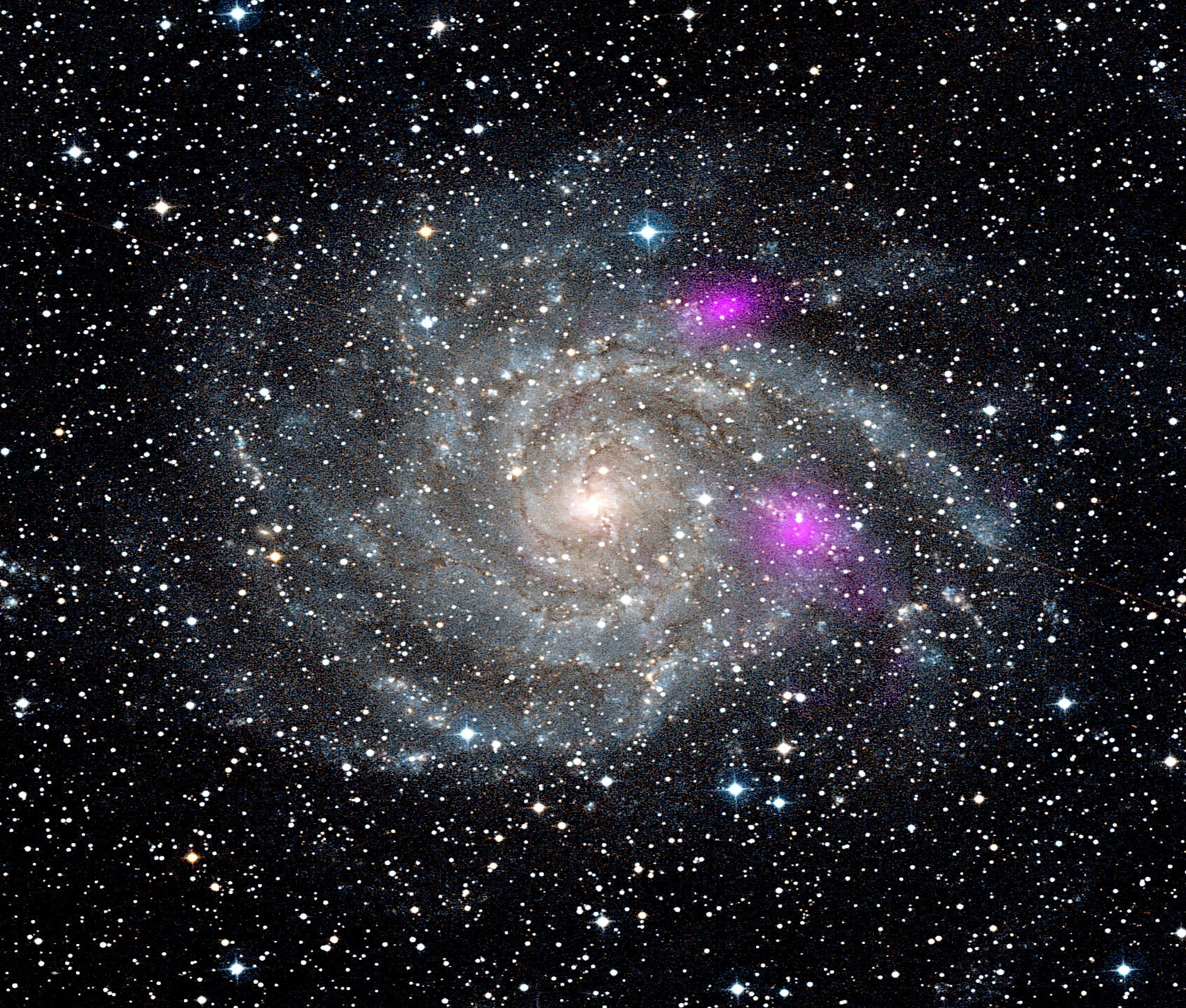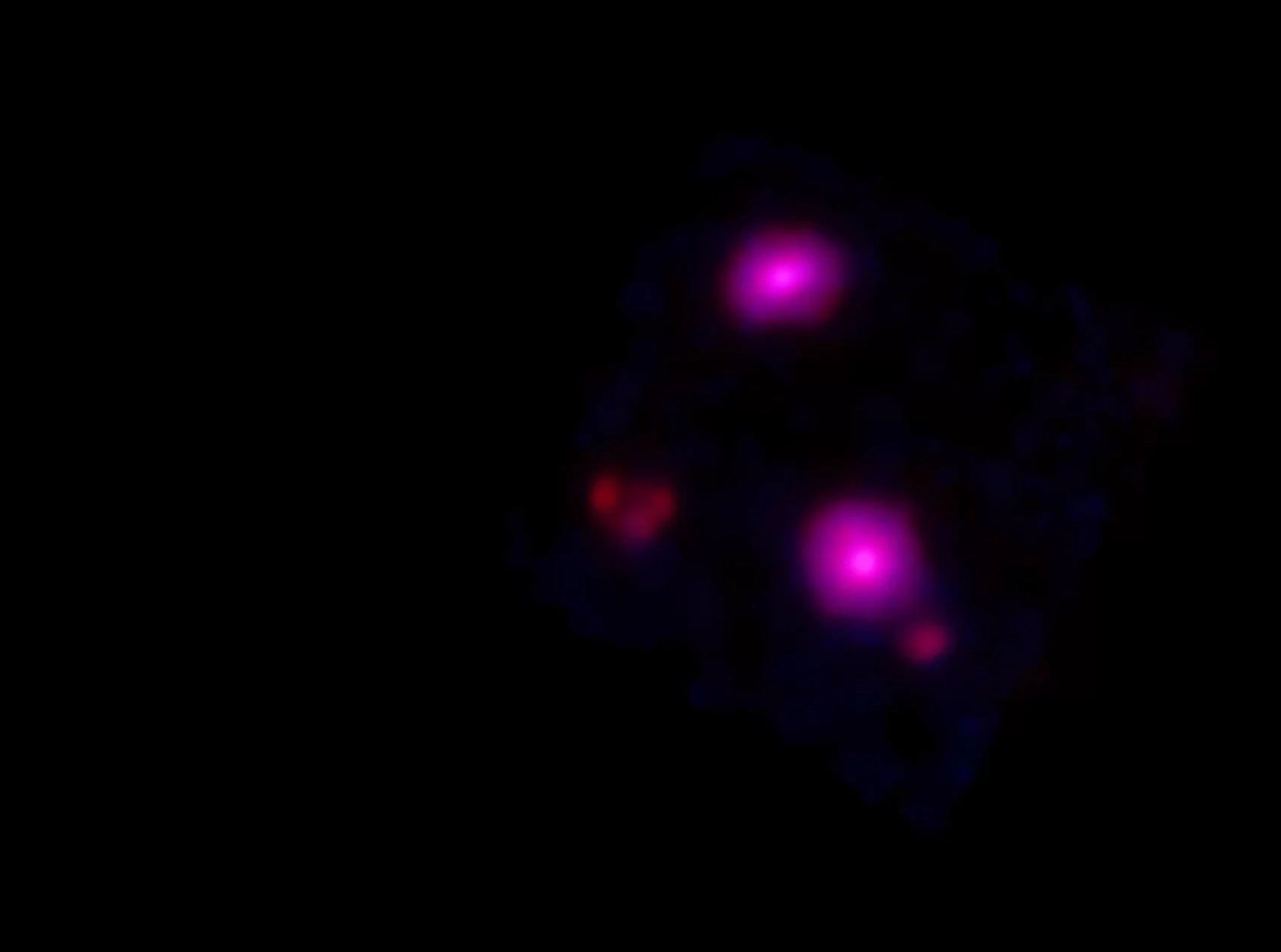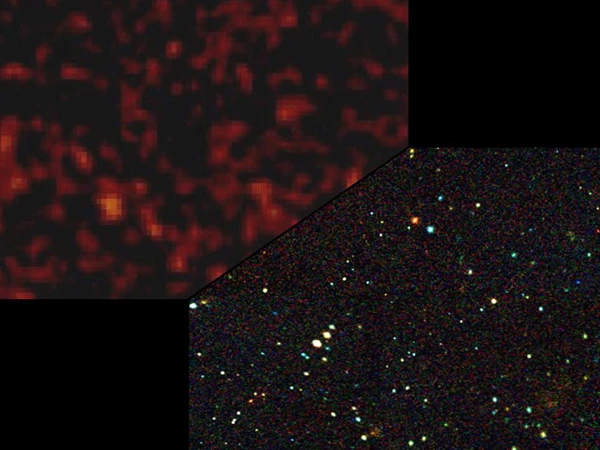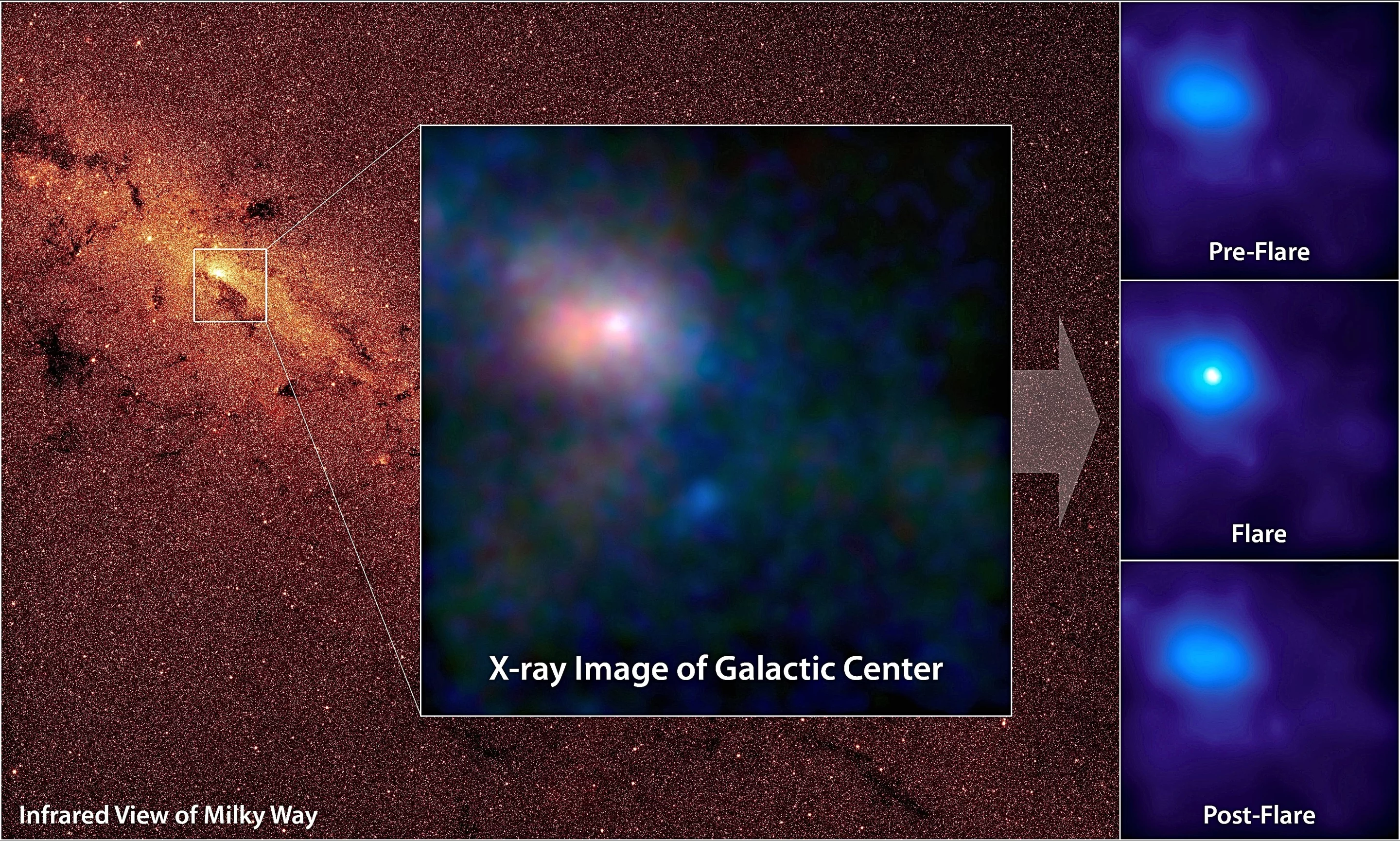Black holes, which abound in the Universe, convert matter into geometry – the larger the amount of matter that disappears through the event horizon, the larger they grow, with the only external sign of their presence being the warping of space due to their gravity. In the process, a great deal of extremely hot gas is generated, and that gas emits hard x-rays. Now NASA's NuSTAR space telescope can find black holes by forming high-resolution images of the cosmos in hard x-rays.
NuSTAR (standing for Nuclear Spectroscopic Telescope ARray), is a NASA Small Explorer Program satellite launched in 2012. Such satellites are intended to perform research at the edge of new technologies for relatively small (less than US$120 million) expenditures. NuSTAR is the only orbiting telescope capable of taking high resolution images using the "light" of hard x-rays – those penetrating x-rays having energies greater than about 10-15 keV. For comparison, a dental x-ray unit generates x-rays with average energies of about 20-30 keV.
The best previous performance in hard x-rays was given by the European Space Agency's INTEGRAL spacecraft, whose "optics" were those of a pinhole camera, resulting in low resolution and low sensitivity.
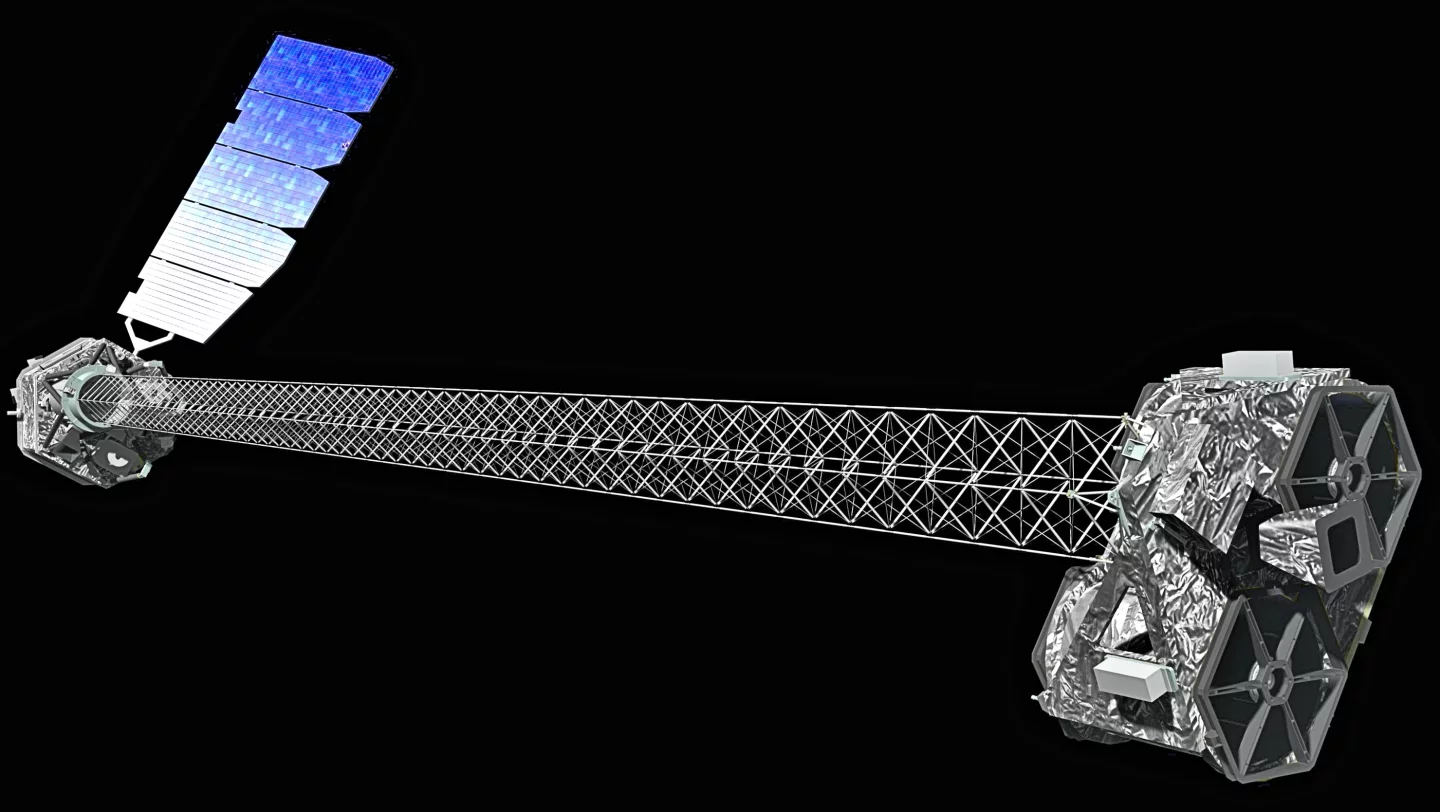
In contrast, NuSTAR was given a double x-ray telescope including optics that focus hard x-rays up to energies of 80 keV into a relatively high resolution image – showing about 15 times greater detail than did Integral. Because the image is formed by focusing x-rays from an aperture onto a point, the sensitivity of NuSTAR's optics is roughly 100 times better than those of INTEGRAL.
The lead picture shows spiral galaxy IC 342, including hard x-ray data from NuSTAR. The two magenta spots are blazing black holes which appear much brighter than typical stellar-mass black holes, such as those that pepper our own galaxy. However, they cannot be supermassive black holes or they would have migrated to the galaxy’s center. Instead, they may be intermediate in mass, or there may be something else going on to explain their extremely energetic state. Additional NuSTAR images and details appear in the image gallery.
How it works
Hard x-rays are mainly known for penetrating and being absorbed by matter. How did NuSTAR's designers equip the satellite with a practical system of x-ray optics?

When an x-ray strikes a flat surface at a sufficiently shallow angle, it will not penetrate the material, but rather will be reflected as in a normal mirror. This in itself will not result in forming an image. However, if a series of surfaces which are ever so slightly parabolic or hyperbolic in shape are arranged concentrically about the desired optical axis of a telescope, incident x-rays which are parallel will be focused on an image plane, as shown in the picture above.
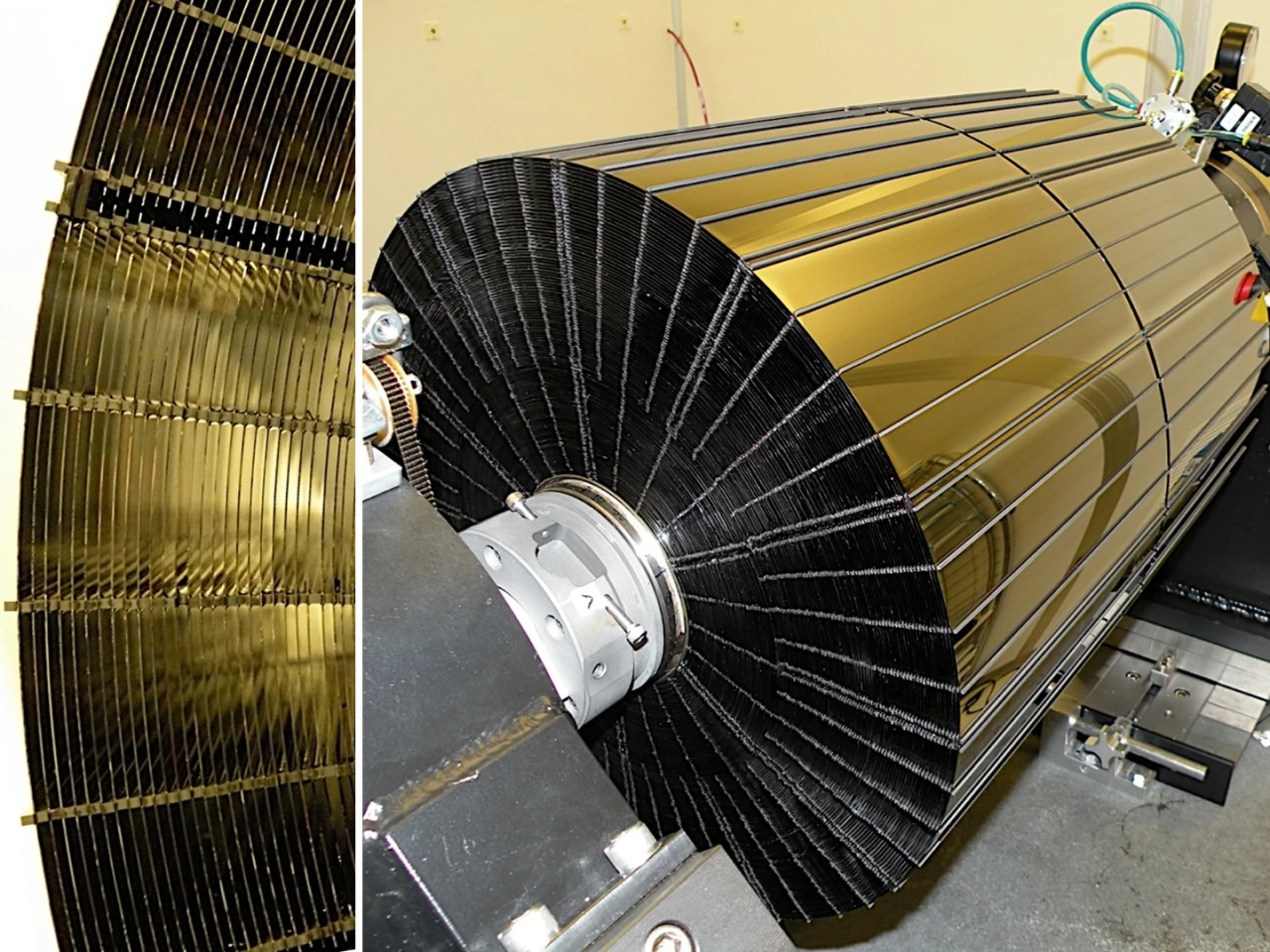
The x-ray imaging optics of NuSTAR consist of 4680 individual mirror segments arranged in 133 concentric mirror shells. The mirror segments are coated with Pt/SiC and W/Si multilayers. Both sets of optics were built from the inside out with individual shells separated by graphite spacers held together only by epoxy.

NuSTAR's x-ray detectors are also special. Each focal plane detector system has four 32x32 pixel cadmium zinc telluride (CdZnTe) hybrid detectors which plug into a common board, giving a 64x64 pixel image. CdZnTe detectors are being developed for a host of hard x-ray and gamma detection applications. Each pixel is 0.6 mm on a side, leading to detectors which measure 2.0 cm on a side. The active size of the camera is 4x4 cm in size, corresponding to a 12 arcminute field of view – about 20 percent of the area of the full moon. The image is somewhat coarser than the detector system, with a full width at half maximum spot diameter of about 15 arcseconds, or about the size of Saturn's globe.
NuSTAR is providing a view of the Universe that is almost completely new to astronomers. Many more discoveries are likely to follow during NuSTAR's 18-month mission.
Source: NASA/JPL-Caltech

